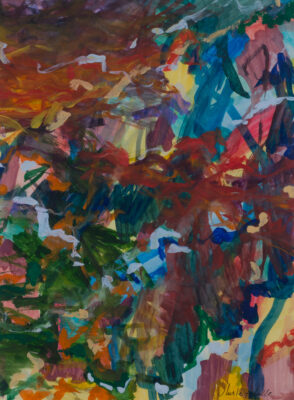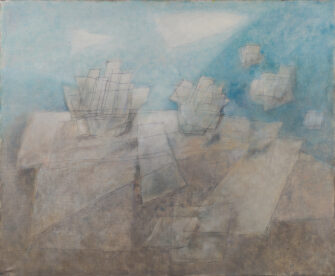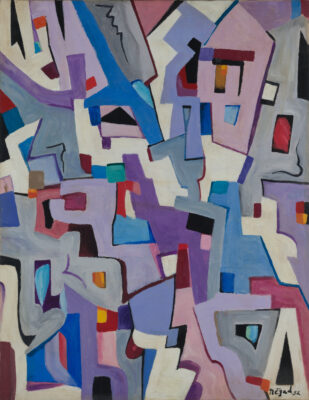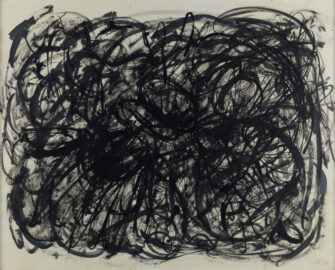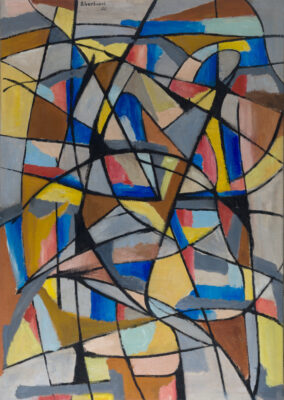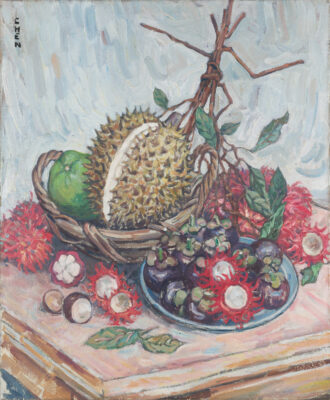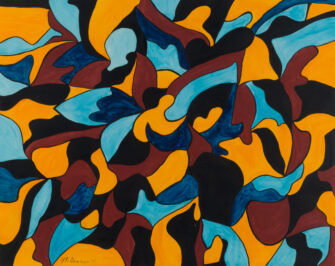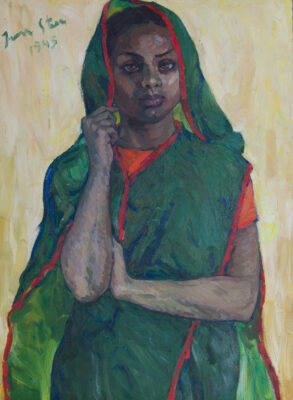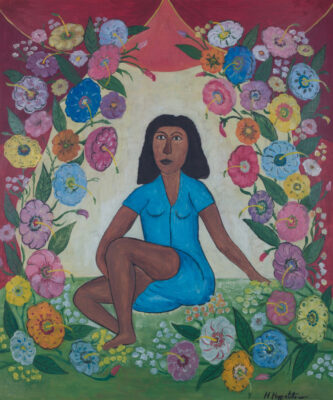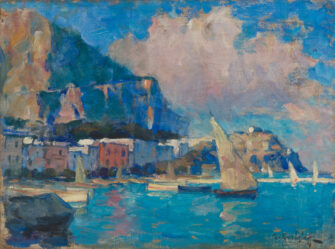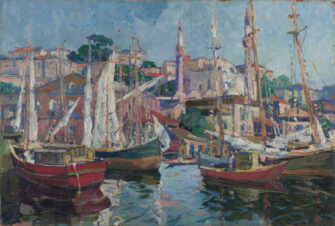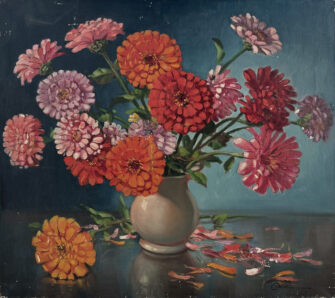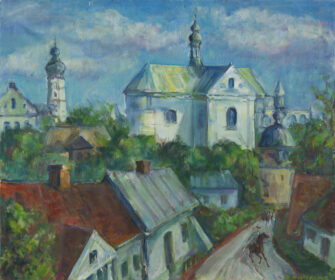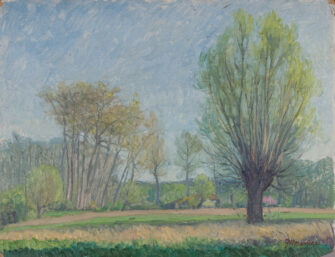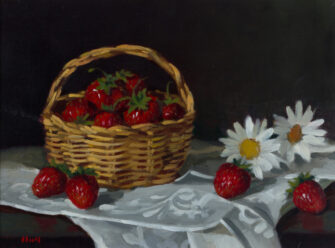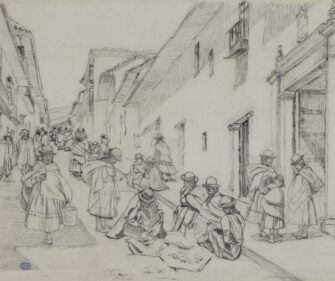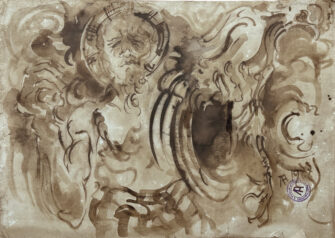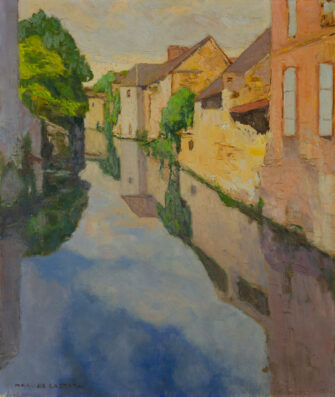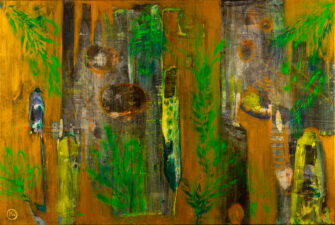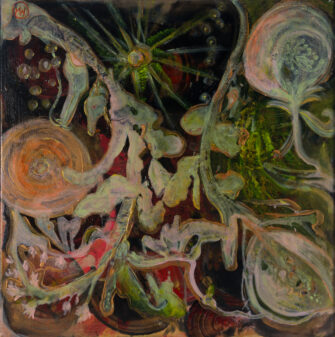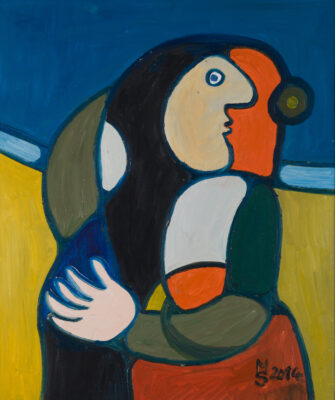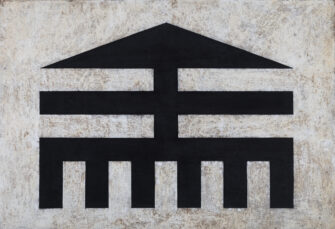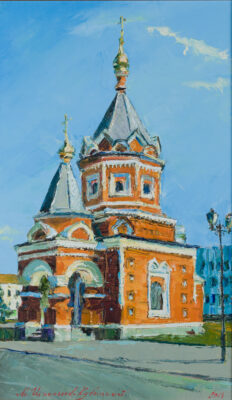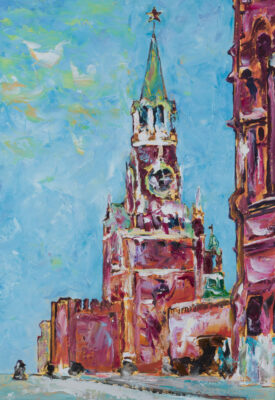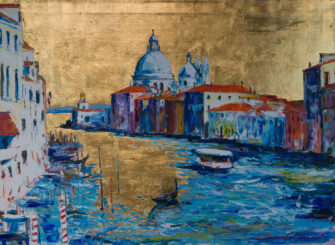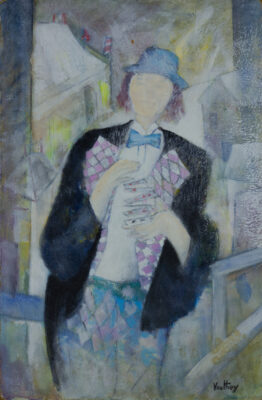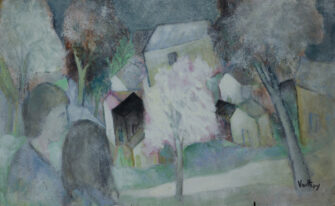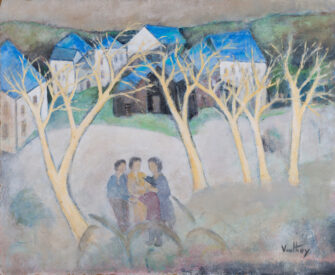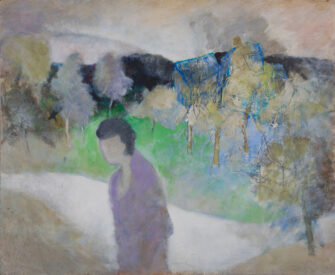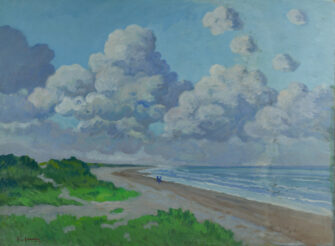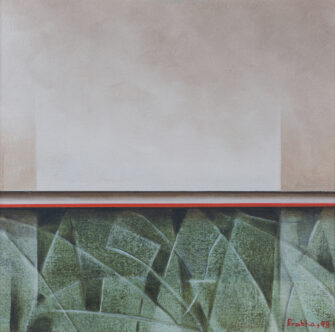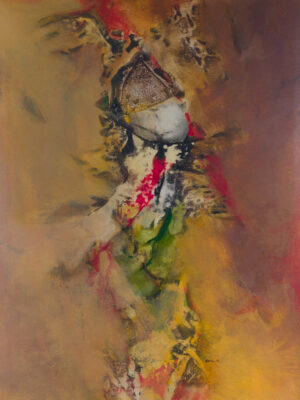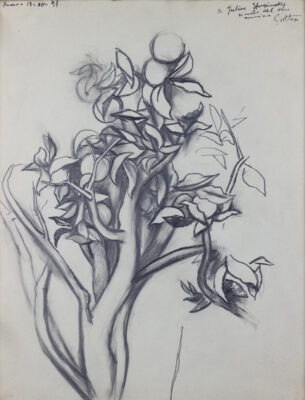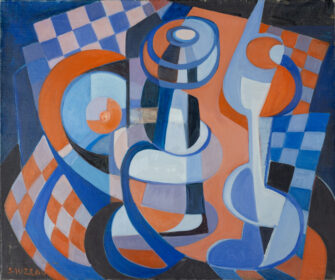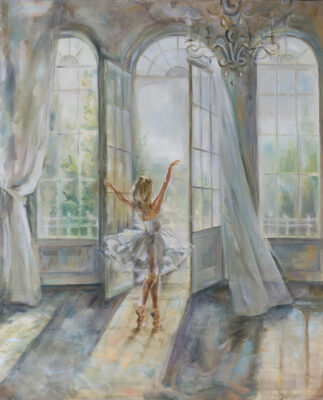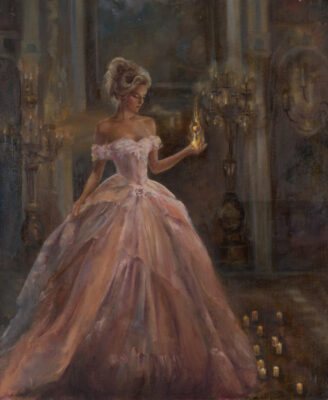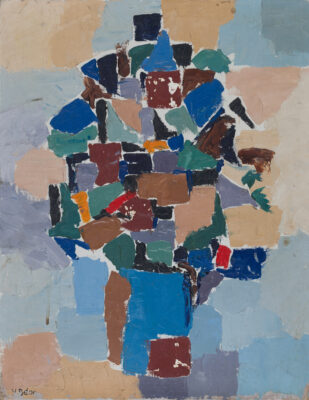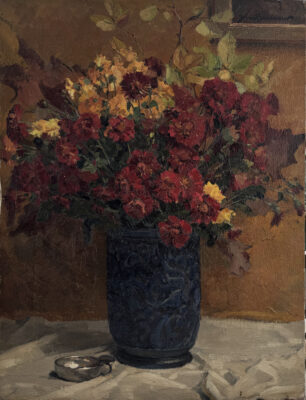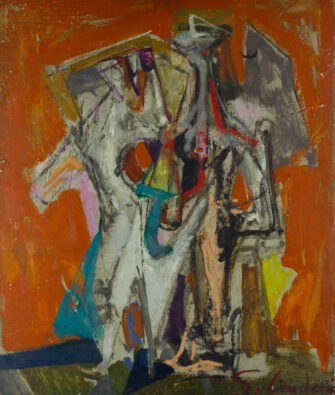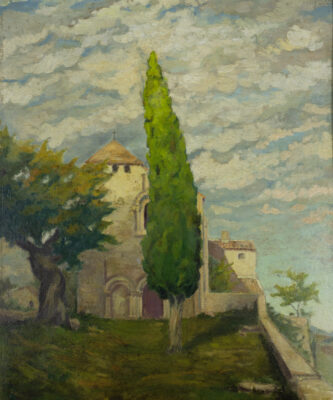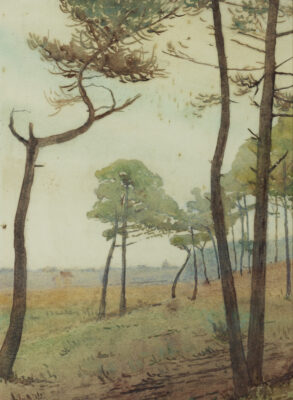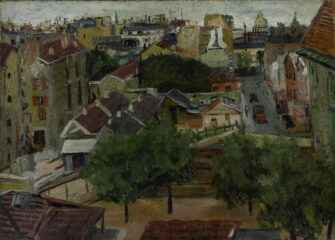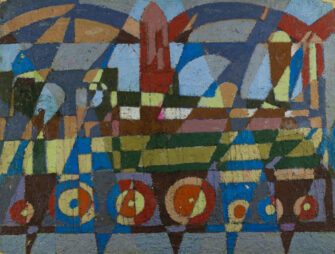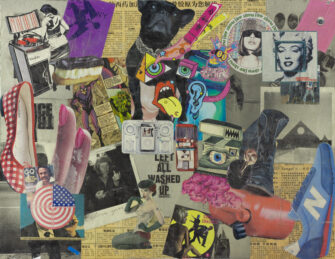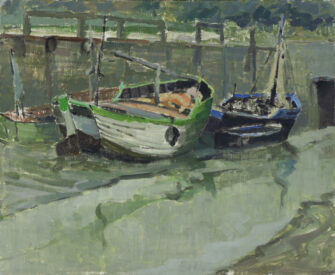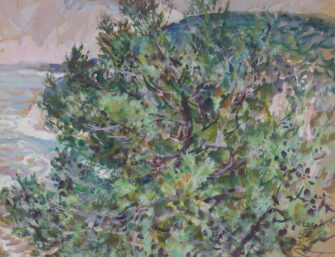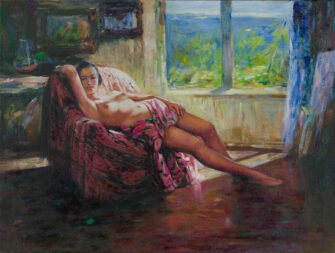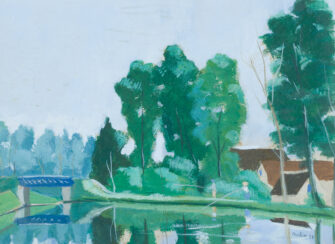November Fine Art Auction 2025: 12 Unmissable Art Treasures Unveiled
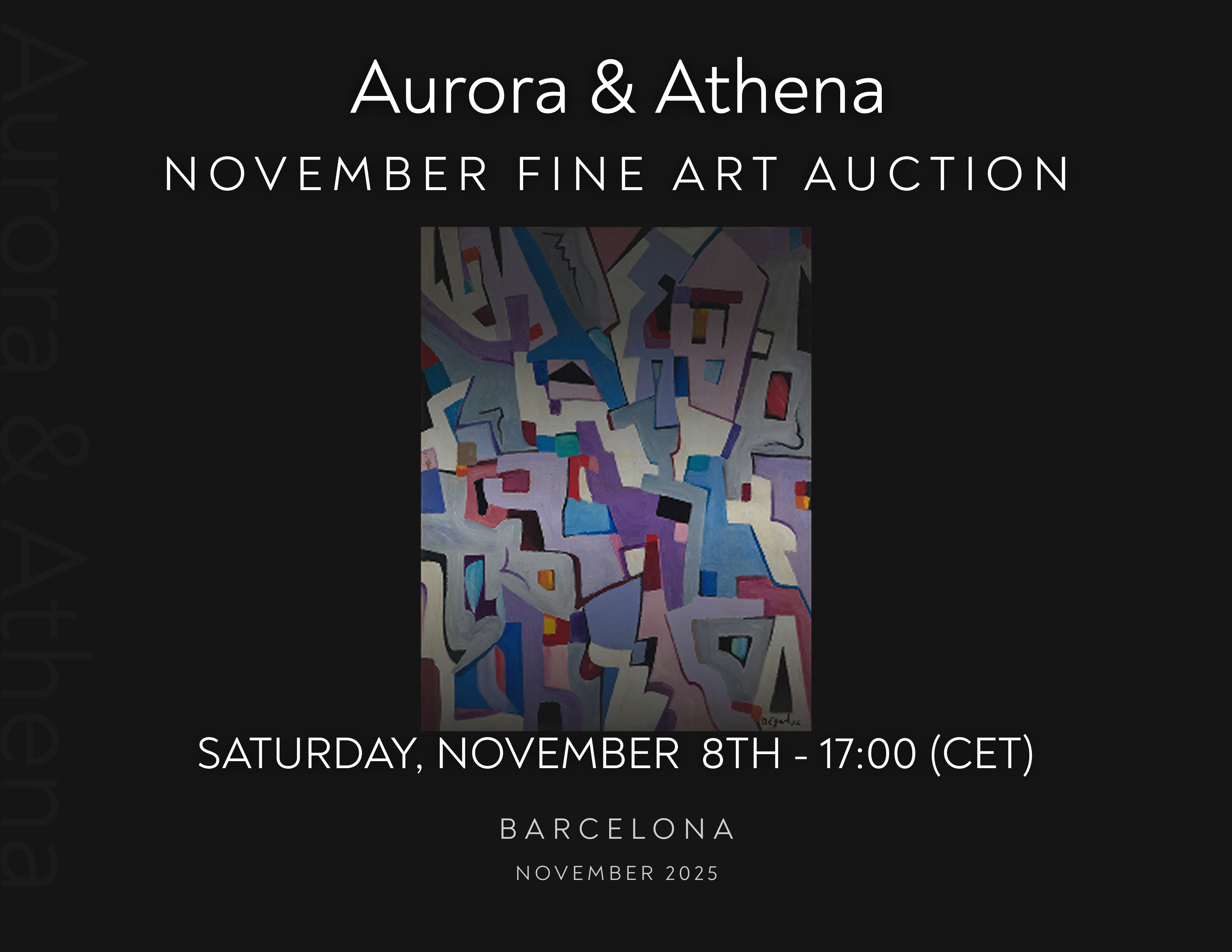
Discover rare masterpieces at the November Fine Art Auction 2025 by Aurora & Athena. Explore top lots from global modern artists and bid online.
Table of Contents
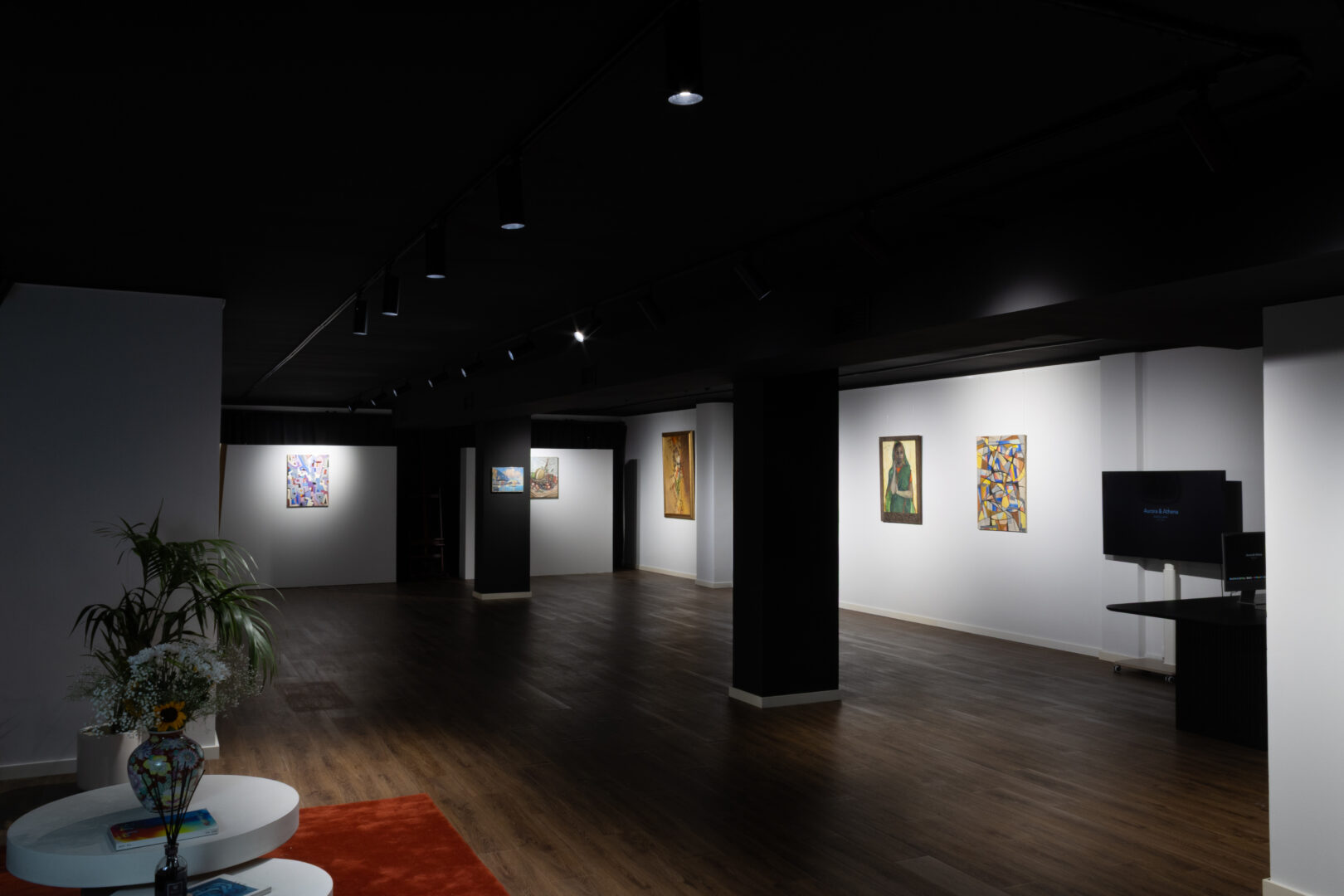
The November 2025 Fine Art Auction at Aurora & Athena auction is set for Saturday, November 8, 2025 at 17:00 CET in Barcelona, promising a marquee event for global art collectors. This carefully curated international fine art sale bridges continents and art movements (auroraathena.com), featuring masterpieces from Europe, Asia, Africa, and the Americas. From lyrical post-war abstractions to vibrant modernist still-lifes, the catalog spans a world of styles and stories.
Enthusiasm is high as Aurora & Athena auction invites art lovers to explore an array of exceptional works – each a chance to own a piece of 20th-century art history. In the spirit of previous auctions, we set an optimistic, storytelling tone to introduce the standout lots and celebrate the treasures awaiting discovery.
Bid Now on:
Highlights of the November Fine Art Auction 2025
Shirley Jaffe – Untitled, c. 1950s
An early abstract gem from American-born Parisian artist Shirley Jaffe, this untitled 1950s piece is a cascade of gestural brushstrokes in reds, greens, blues, and yellows (auroraathena.com).
The painting comes from Jaffe’s post-war Paris years as she shifted from figuration to lyrical abstraction, and it balances energy with harmony.
The strokes feel “spontaneous and deliberate” at once (auroraathena.com), capturing the lively École de Paris atmosphere while keeping Jaffe’s own rhythm. We witness the artist in transition: the expressive freedom here foreshadows the precise geometric style of her later career.
It’s an energetic yet composed composition – a rare snapshot of Jaffe finding structure within movement during a pivotal moment in her evolution (auroraathena.com).
Josef Šíma – Poésie de la lumière, 1961
A meditation on light by Czech modernist Josef Šíma, Poésie de la lumière (1961) is a luminous lyrical abstraction where soft geometry and color dissolve into pure sensation (auroraathena.com).
Šíma’s canvas shimmers with blues, golds and whites that seem to merge into light and air, as if sunlight were passing through crystal (auroraathena.com). In this mature-period work, the painter merges precise structure with ethereal poetry – disciplined forms that vibrate with spiritual energy (auroraathena.com).
The result is an almost mystical serenity, inviting the viewer into a tranquil, otherworldly atmosphere. Regarded as one of Šíma’s most beautiful statements on the unity of matter and light (auroraathena.com), this painting exemplifies his quest to portray not the visible world, but its inner essence – a “silent, luminous poetry” connecting the physical and the infinite.
Mehmed Nejad Devrim – Abstract Composition, 1952
A dynamic mid-century abstraction by Turkish-born Nejad Devrim, Abstract Composition (1952) distills post-war Paris onto canvas (auroraathena.com). Interlocking planes of bold red, deep blue, and earthy umber form a powerful color architecture (auroraathena.com), the surface alive with a “quiet intensity” that is at once measured and impulsive (auroraathena.com).
Devrim – a prominent figure of the École de Paris – balances structure and freedom here, each stroke appearing controlled yet full of spontaneous spirit. His composition reflects a dialogue between European modernism and Eastern heritage, weaving influences from Byzantine and Islamic art into a modern abstract language (auroraathena.com).
The canvas becomes a mosaic of light and meaning, a poetic harmony of geometry and gesture. This painting embodies Devrim’s vision of revealing the world’s inner resonance through rhythm, light, and color (auroraathena.com) – a mid-century moment where global cultures synthesized on the artist’s palette.
Toshimitsu Imai – Untitled, 1981
A striking East-meets-West abstraction, Toshimitsu Imai’s Untitled (1981) is a late-career work on paper that pulses with calligraphic energy. Broad black ink arcs sweep across the large sheet, colliding and flowing with bold authority (auroraathena.com).
Imai, a Japanese avant-garde painter active in Paris’s Art Informel movement, infuses this piece with the spirit of Japanese calligraphy and the vigor of Western Action Painting.
Each brushstroke embodies a dialogue of control and spontaneity – deliberate in its inky weight yet fluid and free in motion (auroraathena.com). The tension between dark ink and empty white space creates a rhythmic balance, reflecting Imai’s lifelong quest to bridge Eastern and Western aesthetics (auroraathena.com).
The result is immediate and timeless (auroraathena.com): gestural arcs that dance across the paper, evoking both meditative calm and explosive movement. This late-period Imai work resonates like visual poetry, a testament to the artist’s ability to reconcile discipline with impulse, and serenity with force (auroraathena.com).
Jilali Gharbaoui – Untitled, 1955
One of Morocco’s first abstract painters, Jilali Gharbaoui unleashes a whirlwind of gestural energy in this seminal 1955 canvas. The surface is a storm of bold ochre, black, and blue strokes crashing together in an emotional maelstrom (auroraathena.com).
Gharbaoui isn’t depicting a physical landscape so much as an inner feeling – painting not objects but sensations of thought and spirit (auroraathena.com).
In this Paris-created work, he was in the midst of a dramatic shift from figuration to lyrical abstraction (auroraathena.com). The brushwork is both instinctive and structured, a rhythmic clash of chaos and control where dense passages meet open voids (auroraathena.com).
We sense the young artist wrestling with internal turmoil on the canvas, each mark an act of liberation. Raw and visceral, yet strangely harmonious, this painting transcends geography to capture emotion in its pure form – hovering between despair and transcendence (auroraathena.com).
Gharbaoui’s Untitled (1955) offers a rare glimpse into the raw heart of North African modernism, radiating the urgency and authenticity that make his legacy so enduring.
Georgette Chen – Still Life with Rambutans, mid-20th c.
A vibrant still-life from Chinese–Singaporean artist Georgette Chen, Still Life with Rambutans transforms everyday tropical fruits into a modernist reverie.
On a sunlit table, rambutans, durians and mangosteens are rendered with careful brushwork and a warm, rich palette, each form glowing yet grounded (auroraathena.com).
Chen’s composition is serene and balanced – each fruit placed just so, “with quiet authority,” yet painted with a tactile realism that makes them come alive (auroraathena.com).
The influence of her Parisian post-Impressionist training is evident in the harmonious tones and subtle play of light (auroraathena.com), while an Eastern sensibility imbues the scene with meditative calm.
In Chen’s hands, these humble Southeast Asian fruits become a celebration of light, color, and the quiet beauty of everyday life. This painting is more than an academic still-life; it’s a cultural bridge, marrying European technique with Asian atmosphere (auroraathena.com). A marquee lot estimated at €30,000–€40,000 (auroraathena.com), it underlines Chen’s importance as a pioneer of Asian modern art – inviting the viewer into a world where East and West find harmony in the simplicity of a tabletop scene.
Hernando Ruiz Ocampo – Abstraction, 1977
A late-period watercolor masterpiece by Filipino modernist H. R. Ocampo, Abstraction (1977) is described as a “symphony of organic form and color” (auroraathena.com).
Across the paper, translucent curvilinear shapes overlap and interlock like fragments of living matter suspended in air (auroraathena.com).
Ocampo’s palette of amber, coral, and turquoise feels at once earthy and cosmic – hues echoing the tropical sunlight and vibrant seas of the Philippines (auroraathena.com).
His mastery of transparency and layering is on full display: washes of watercolor breathe across the surface, creating soft transitions of tone that give the composition depth and movement (auroraathena.com). Each form flows into the next with musical cadence, reflecting Ocampo’s lifelong quest to find visual harmony in chaos (auroraathena.com).
Painted when Ocampo’s abstract style had become more meditative, this work distills his idea that art can reveal the inner structure of nature – here, form becomes energy and color becomes light (auroraathena.com). The result is a mesmerizing dance of shapes and transparencies, as soothing as it is dynamic, inviting viewers to float through a dreamscape of tropical rhythm.
Irma Stern – Portrait of a Woman, 1945
A powerful and expressive portrait by South African modernist Irma Stern, this 1945 oil painting captures a woman’s visage emerging from bold, textured brushstrokes. Stern’s confident hand marries European Expressionist technique with what she called the “light and soul of Africa.”
The sitter’s features are formed by a fabric of earthy reds, deep greens, and touches of gold, the colors laid on in thick impasto that adds almost sculptural depth (auroraathena.com). Her gaze is both strong and introspective, hinting at an inner life beyond the canvas.
Painted during one of Stern’s most productive periods, the portrait exemplifies her ability to fuse Western and African sensibilities (auroraathena.com).
Rhythmic contours and subtle distortions of form – hallmarks of Stern’s unique style – move the image beyond mere realism toward psychological and spiritual depth (auroraathena.com).
This is portraiture as dialogue: between artist and subject, Europe and Africa, color and emotion. Rich with authenticity, warmth and “a rare poetic power” (auroraathena.com), Stern’s Portrait of a Woman transcends likeness to become a celebration of individual identity and cultural pride. It’s a shining example of why Irma Stern is considered one of Africa’s most celebrated 20th-century artists.
Hector Hyppolite – Woman’s Figure, mid-20th c.
A mystical figurative painting by Haitian artist Hector Hyppolite, Woman’s Figure radiates the intuitive power of a self-taught visionaire. Hyppolite, a Vodou priest turned painter, approaches the canvas with naïve yet confident strokes that bridge folk art and modernism.
Here, a female figure stands against fields of ochre, blue, and green, her form outlined in rhythmic brushstrokes that vibrate with spiritual energy (auroraathena.com).
Though simply rendered, she exudes an almost divine presence – Hyppolite famously used house paints and even chicken feathers as brushes, imbuing his work with direct, unfiltered emotion (auroraathena.com).
The composition feels ordinary and enchanted at once: an everyday woman elevated to a symbol of Haiti’s ancestral spirits and strength. Vodou symbolism whispers in the background hues and posture of the figure, reflecting the artist’s ability to turn the ordinary into the sacred (auroraathena.com).
The painting’s surface is tactile and raw, full of devotion and mystery beyond the visible (auroraathena.com). Woman’s Figure stands as a testament to Hyppolite’s status in Caribbean art – a “self-taught and visionary” talent whose warm, resilient imagery continues to captivate the world (auroraathena.com).
In this piece we feel the intuitive sacred energy that makes Hyppolite one of Haiti’s most important artists of the 20th century.
Konstantin Gorbatov – Capri Landscape, early 20th c.
An enchanting Mediterranean scene by Russian post-Impressionist Konstantin Gorbatov, Capri Landscape captures the sun-drenched serenity of the artist’s exile in Italy.
Painted on the idyllic island of Capri, likely in the 1920s-30s, this small canvas is layered in pastel blues, pinks, ochres, and corals that bathe the terraces and sea in sparkling light (auroraathena.com).
Gorbatov’s loose yet deliberate brushstrokes create an atmosphere of clarity – the air in the painting feels “crystalline”, and one can almost sense the warmth of the late afternoon sun (auroraathena.com).
Despite its intimacy, the composition is structured and confident: the strokes are impressionistically free, yet each is placed with purpose (auroraathena.com). There’s a lyrical softness as well, as Russian sensibility meets Southern light – Gorbatov transforms the physical landscape into an emotional topography of peace and rebirth after turmoil (auroraathena.com).
Having left Russia after the Revolution, the artist poured his longing and hope into such Mediterranean vistas. Capri Landscape is a meditation on belonging and beauty in exile (auroraathena.com), merging nostalgic Russian lyricism with a liberated Italian palette.
In its radiant glow, we feel Gorbatov’s belief that painting – like memory – can transcend distance and restore what was lost, turning longing into radiant visual poetry.
A large, exuberant cityscape by American Impressionist Jane Peterson, View of Istanbul offers a kaleidoscopic glimpse of the city where East meets West. Peterson, an intrepid traveler, painted Istanbul’s skyline with plein-air immediacy and Fauvist vigor.
Domes and minarets rise along the Bosphorus in bold strokes of blue, gold, white, and copper – the scene “big and bold,” with reflections dancing in the harbor below (auroraathena.com).
Rather than a strict topographical rendering, Peterson presents Istanbul as a “view of light and rhythm,” capturing the living pulse of a city astride two continents (auroraathena.com).
Her energetic brushwork feels spontaneous (as if she painted swiftly on-site) yet the composition remains harmonious and balanced (auroraathena.com) – a testament to her disciplined eye and academic training. In this painting, architecture becomes atmosphere: solid forms like mosques and towers are softened by distance, sun haze, and vibrant color. View of Istanbul is both a travelogue and an artistic statement (auroraathena.com).
Peterson celebrates the exotic grandeur of the city while conveying its universal, timeless spirit. The result is a glowing record of Istanbul that feels eternal in her hands – a canvas alive with the “meeting of cultures, colors and histories” through her modernist eyes (auroraathena.com).
No wonder Peterson was praised for bringing the world’s beauty to American audiences; here, she invites us to experience the enchantment of Istanbul’s timeless pulse firsthand.
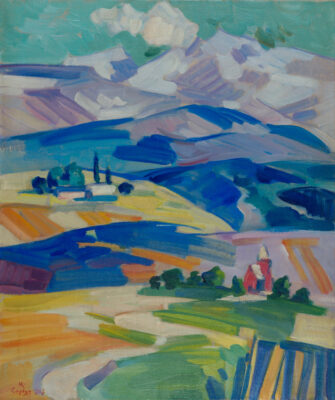
48: Attributed to Martiros Saryan – In the Mountains, 1967
Attributed to Martiros Saryan – In the Mountains, 1967 (Optional Highlight)
A captivating Armenian landscape attributed to Martiros Saryan, In the Mountains (1967) is imbued with the lyricism and tranquility that define Saryan’s beloved work.
Rolling hills unfurl beneath a crystal-clear sky, built up in broad planes of ochre, rose, and turquoise that vibrate with sunlight (auroraathena.com).
Even as an attributed piece (bearing a 1967 signature and inscription), it exudes the serenity of Saryan’s vision – each line and color feels like an homage to the Caucasus mountains, where every contour seems to breathe with the spirit of Armenia (auroraathena.com).
The brushwork is smooth and flowing, a gentle rhythm that guides the eye across the canvas (auroraathena.com). Structure and atmosphere marry perfectly: solid forms of hills and sky are suffused with light and air, creating a sense of harmony and warmth. This painting embodies Saryan’s philosophy of seeing the divine in nature’s simplicity – it’s as if the artist translated the landscape into a “symphony of light and air”, a joyful hymn to his homeland (auroraathena.com).
Offered “as attributed” with an inviting estimate of around €2,000–€3,000, In the Mountains holds a special fascination. Its serene beauty and authentic inscription make it a conversation piece – a window into the world of one of Armenia’s most cherished painters, and a chance to own a slice of that legacy.
Other Notable Works
Beyond the headline lots above, the November Fine Art Auction 2025 presents a wealth of additional notable works, underscoring the sale’s impressive breadth. Collectors will discover pieces by several renowned artists spanning different genres and regions. For example, Italian modernist Renato Guttuso is represented with a bold floral still-life (Flowers, 1954), brimming with the artist’s trademark intensity.
There’s also a rare self-portrait by Indonesian expressionist Affandi (Self-Portrait with Rooster, 1977), which showcases the visceral energy of one of Southeast Asia’s most important 20th-century artists.
Enthusiasts of European cityscapes will appreciate a charming Paris street scene by Antoine Blanchard, whose nostalgic depictions of boulevards and rainy sidewalks capture the romance of mid-century Paris. Meanwhile, contemporary art lovers can look forward to vibrant modern canvases by rising artists such as Mariola Wroblewski – her recent works (Floralis and Jungle, 2022) add a burst of 21st-century color and creativity to the mix.
From mid-century Cubist experiments to post-war expressionism, the 20th-century art auction spans eras and styles. Whether it’s a surrealist fantasy or a minimalist study, each work has been selected to offer “investment-quality art for every taste.” Together, these lots ensure that the modern art sale is not just about a few stars, but about a constellation of global art highlights, each contributing to a diverse and exciting catalog.
Treasures of the 20th Century School
In addition to works by named artists, Aurora & Athena’s November Fine Art Auction 2025 modern art sale features a charming selection of early-to-mid 20th-century “School” paintings – pieces by unknown hands that nonetheless capture the spirit of their time and place. These are the hidden gems of art history, unsigned but evocative, often reflecting the techniques of well-known movements like Impressionism or Cubism at accessible price points. For instance, collectors will find numerous 20th Century French School oils that offer nostalgic glimpses of everyday European life.
There are village landscapes with red roofs glowing in the sun and bustling harbor scenes with boats at dock, each painting rich with the atmosphere of mid-century France. One can almost stroll through a quaint French market or linger by a canal in 1930s Burgundy through these works – they collectively evoke a bygone era of churchyard tranquility and lively provincial towns, distilled onto canvas.
From further afield comes a fascinating 20th Century Chinese School painting of a reclining nude by a window – a subject rarely seen from mid-century China. Though the artist is anonymous, the piece offers a window into the academic style and sensibilities of its time, subtly merging Eastern and Western artistic ideals. Its presence adds geographic diversity to the School offerings, reminding us that unsung artists around the world were contributing to modern art’s mosaic.
The “School” section even ventures into Pop Art territory: Lot 50 is a striking Contemporary School Pop Culture Collage blending comic book imagery, retro advertisements, and vivid colors (auroraathena.com). This dynamic mixed-media piece explodes with visual noise – a playful patchwork of 20th-century pop culture that demonstrates the breadth of styles on offer in the auction’s unsigned works. From traditional landscapes to experimental collages, these School paintings enrich the catalog with authenticity and charm.
They allow collectors to acquire period pieces that mirror the aesthetics of famous movements, often at gentler estimates, making them perfect entry points for new buyers or delightful additions for seasoned collectors who appreciate the spirit of an era captured by an unknown hand.
Conclusion
As the countdown begins for November 8, 2025, we invite you to explore the full catalog of Aurora & Athena auction and discover these exceptional works for yourself. This event is more than an modern art sale – it’s an evening where art transcends borders and eras, uniting a community of collectors and enthusiasts in pursuit of beauty and history.
Bidding will be conducted live online, with global participation enabled via platforms like LiveAuctioneers and BidSpirit, so art lovers around the world can join the excitement in real time (auroraathena.com).
Whether you are drawn to a mid-century abstract masterpiece or a poignant cultural scene, this sale offers a unique opportunity to acquire artworks that speak to the soul and the intellect. Each lot comes to the block with its own story and provenance, waiting for the next chapter in its journey.
Don’t miss the November Fine Art Auction 2025 at Aurora & Athena – join us for an unforgettable evening where masterpieces find new homes and perhaps, amid the thrill of the global art auction, you’ll claim a treasure of your own. Good luck, and happy bidding!

